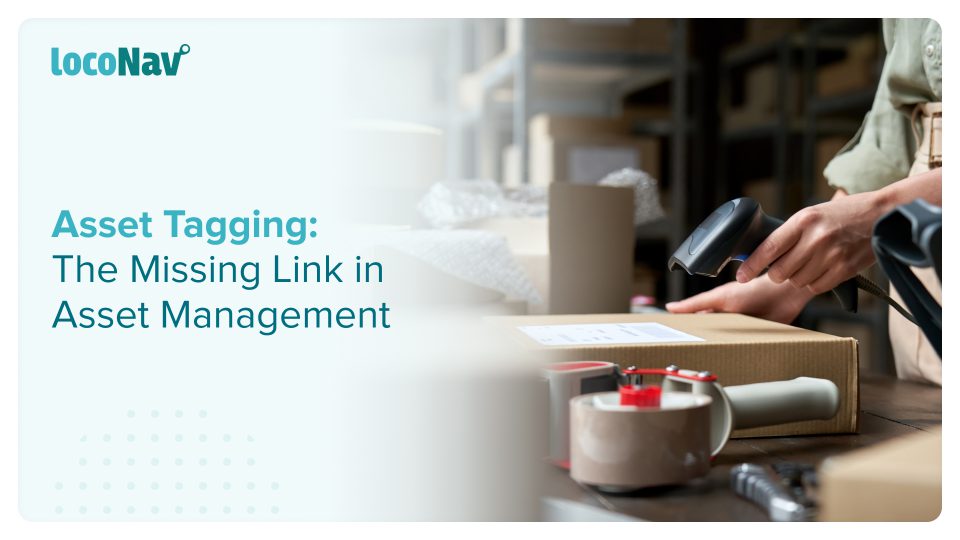

Asset tagging systems are critical for businesses that rely largely on their assets to generate revenue such as the fleet industry. This allows fleet managers to track their vehicles and other physical equipment using tags and labels. These tags include barcodes, RFID tags, and GPS trackers.
Fleet businesses can lessen the likelihood of assets going missing by utilising cloud-based solutions and GPS tracking systems. Additionally, maintenance control and dependability are likely to significantly improve with the implementation of asset tagging. It also enables industries ranging from healthcare to retail to profit from assigning asset tags to mission-critical equipment.
In this blog, we will discuss asset tagging basics along with some useful tips to leverage asset tagging for your business.
What is Asset Tagging?
Asset tagging or asset tag management refers to the process of attaching identification tags or labels on assets, often known as asset tags. Asset tagging is used to identify individual assets across their useful life for both fixed and moveable assets. Asset tags, which are often barcode-printed, are scanned with a handheld barcode reader or a smartphone fitted with a barcode scanning app, enabling users to view and document data on an asset’s location, maintenance history, or other facts.
Asset tagging is utilised in a wide variety of industries, including healthcare, education, warehousing, defence, utilities, commercial fleet vehicles, and manufacturing.
Manage your fleet efficiently with LocoNav’s Fleet Management Solutions!
How is Asset Tagging Done?
The following is a summary of the key steps in the asset tagging procedure flow.
Step 1: Identify Asset Type
As a business, you are likely to own a number of different types of assets. Before you tag your assets, clearly define categories and assign a category to each asset.
Step 2: Assign Unique ID
Once the kind and category of an asset have been identified throughout the acquisition process, it is time to begin assigning a unique identification (ID) number. Each ID number is unique and will distinguish all assets from one another in an effort to be easily recognised in an asset monitoring system. Managers and departments will benefit from a unique ID number in procedures such as reordering, maintenance, and accounting.
Step 3: Enter Data into Asset Tracking System
Assets should be added to the system as soon as they are received. It’s helpful to have written process documentation defining when assets should be tagged, how they’re classified, what types of asset labels to seek for specific asset types, and data entry processes to ease this process.
Step 4: Affix Asset Tag to Asset
Attachment methods differ depending on the asset and label type. Some asset tags are attached mechanically, while others are attached with pressure-sensitive glue. Some asset tags support both methods of attachment. If you have the option of using adhesive or mechanical attachments, use the method that is best for the asset or that is required by business policy.
Step 5: Verify Data
Verify assets using at least two data points, such as the barcode and the serial number. When disposing of assets, this process is critical to provide an “accurate and verifiable chain of custody,” which can help to reduce data breaches (especially when disposing of IT assets) and preserve regulatory compliance.
What are the Consequences of Not Using Asset Tagging?
A lack of control over your assets can result in higher expenses, noncompliance, and poor performance. Poor asset management has far-reaching consequences, including:
- Poor ROI
Building and managing a fleet is costly and time intensive. Failure to keep an accurate inventory of all of your vehicles will almost certainly result in a poor return on investment, as you will lack the knowledge to troubleshoot certain areas of your inventory, leading to ill-informed purchasing and maintenance decisions.
- Increased Insurance Premium
Failure to comply with proper asset protection methods may increase the cost of insuring your vehicles.
- Inability to improve your assets’ performance
Inadequate visibility into underperforming vehicles of your fleet might result in decreased productivity and lengthy periods of downtime. Because your drivers rely on the vehicles they use, it is critical that it performs optimally.
Tips an Asset Manager Should Use for Efficient Asset Tagging
We have compiled a list of 4 techniques to simplify asset management and improve productivity.
- Assign A Stakeholder
You may have a lot on your mind in your business. You cannot have complete control over every aspect of your organisation, particularly asset management. As a result, you should identify a key stakeholder on whom you can place your faith and rely to be accountable for the company’s assets.
- Determine Asset Lifecycle
You must understand the life cycle of each of your assets, from purchase to disposal. Estimate how long you will be able to use each of your possessions. You can also make more informed long-term purchases by evaluating the life cycle of your assets.
- Track and Tag Assets Accurately
When you know where your assets are, you can exercise better control over them. Asset tracking and correct asset tagging can be very helpful for a fleet manager.
- Consider Depreciation
You must be aware of the depreciation of your company’s assets. Determine which resources are no longer acceptable for use and why. As a result, regular monitoring of depreciation is required. This activity can determine which things should be retired and when the optimal time to make a purchase is.
FAQ
What Are The Types Of Asset Tags?
- Polyester Asset Tags
- Aluminium Tags
- Tamper Evident Asset Tags
- Barcode Tags
- RFID Tags
- BLE Tags
What Are The Benefits Of Using Asset Tags In Management Software?
Here are 4 reasons why you must use asset tagging in your management software:
- Processes can be streamlined to save time.
- Reduce the likelihood of theft and loss.
- Improve the efficiency of assets
- Reduce administrative expenses.
